#Emanuele Farneti
Explore tagged Tumblr posts
Text




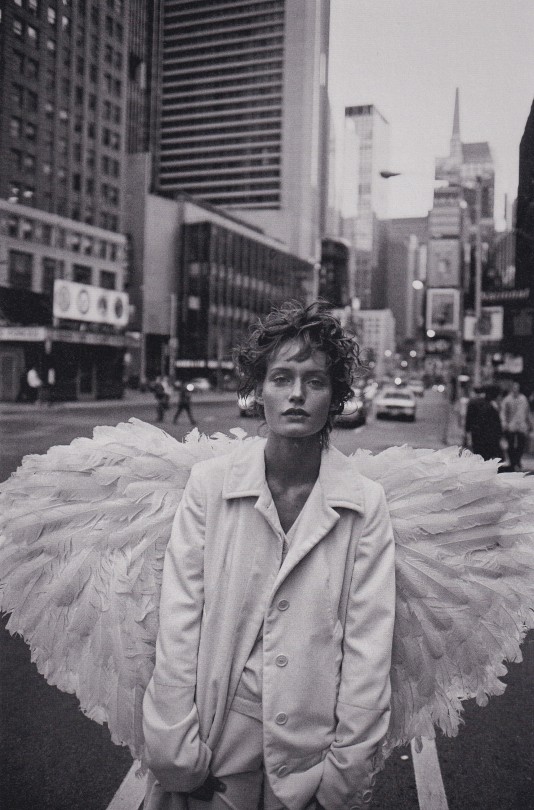
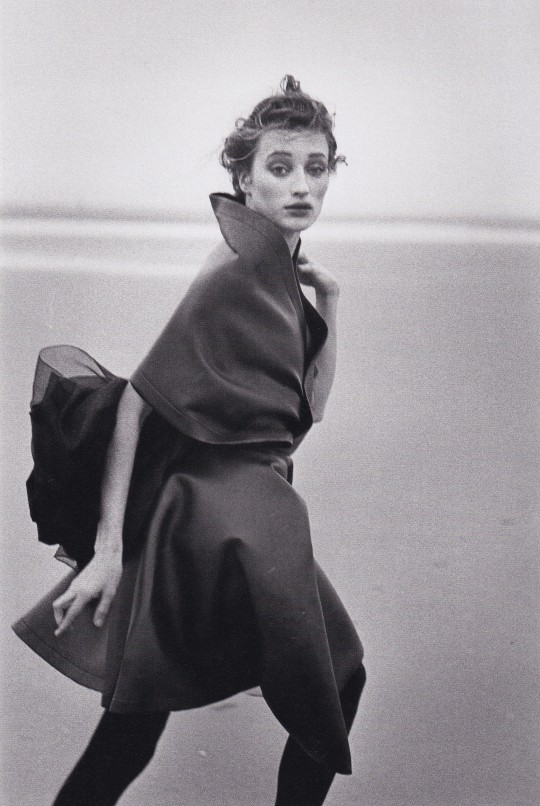
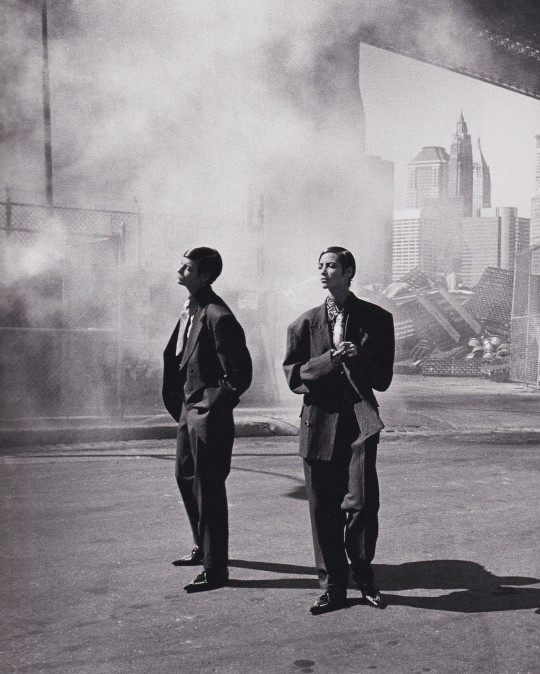
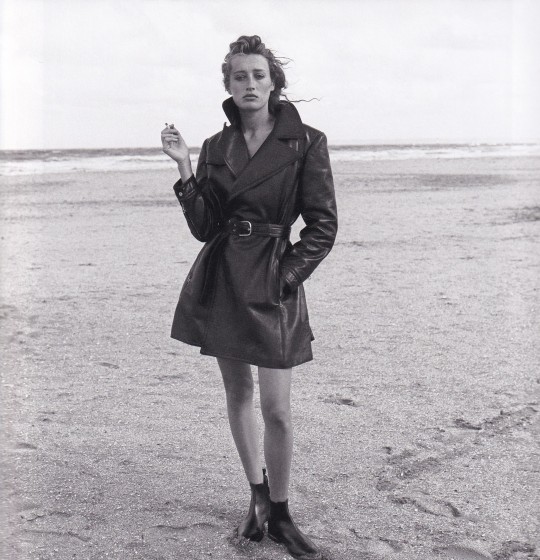


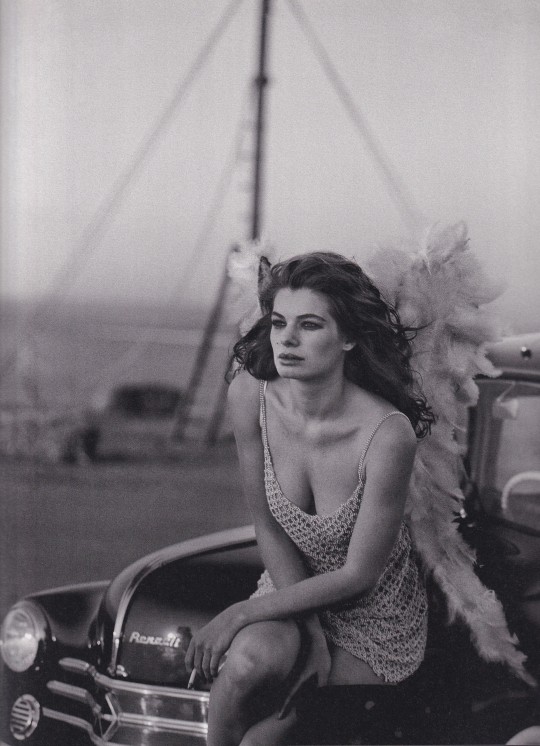


Peter Lindbergh
Con una selezione di foto commentate da Emanuele Farneti
Visionari. I geni della fotografia n. 19
GEDI, Torino 2022, 143 pagine, 24,5x29,5cm,
euro 25,00
email if you want to buy [email protected]
Che Peter Lindbergh amasse “la moda, ma le donne di più”. Che usasse la fotografia come fosse cinema, per raccontare storie (fatte di più attimi messi in fila, oppure di uno solo e risolutivo). Che i suoi luoghi preferiti fossero spiagge, oppure fabbriche dismesse, o deserti, comunque spazi neutri per non togliere attenzione agli sguardi e ai gesti che voleva fossero i veri protagonisti delle sue immagini. Che amasse più di tutto la luce naturale, e come pochissimi sapesse dosarla per disegnare un volto. Che fosse lui ad aver in un certo senso inventato le supermodel, le donne più glamour dei suoi tempi che lui però, per paradosso, amava raccontare senza trucco, senza glamour. Che fosse capace di ironia. Che conoscesse la storia e il mito. Che, come tutti, ciascuno con i propri strumenti, cercasse un senso al nostro stare al mondo, alla malinconia del tempo che corre, a quello che lascia e a quello che toglie. Che si sentisse profondamente europeo, anche quando fotografava l’America. Soprattutto: che sapesse farsi amare dalle persone da lui ritratte. Di tutto questo troverete traccia nelle immagini del volume della collana Visionari a lui dedicato: una selezione di oltre quarant’anni di lavoro, una testimonianza di un percorso artistico irripetibile, che ha beneficiato e a suo modo contribuito a determinare quegli anni lievi e con il senno di poi felici della nostra cultura popolare a cavallo del nuovo millennio. Amante del nostro cinema neorealista, e convinto che il suo lavoro fosse quello di raccontare la verità, o almeno una sua ragionevole approssimazione, disse una volta: “Qualcuno sostiene che la fotografia debba far sognare. Io non credo che le mie foto facciano questo effetto”. Come vedrete in questo volume, si sbagliava.
09/02/24
#Peter Lindbergh#40 anni fotografia#photography books#Emanuele Farneti#Visionari La Repubblica#geni fotografia n.19#fashionphotography#fashionbooksmilano
14 notes
·
View notes
Text






Hejia Li, Ida Heiner, Libby Bennett, Malika Louback, Mathilda Gvarliani, Maty Fall, Mia Armstrong, Mila van Eeten, Penelope Ternes, Rosalieke Fuchs by Sharna Osborne for D Repubblica The Fashion Issue Vol I February 2025
Emanuele Farneti (Editor-in-Chief), Jacob K (Fashion Editor/Stylist), Guido Palau (Hair Stylist), Sam Visser (Makeup Artist), Giulia Massullo (Casting Director), Piergiorgio Del Moro (Casting Director), Cam Tran (Manicurist)
234 notes
·
View notes
Text

Lilli Cummings by Rafael Pavarotti, styling George Krakowiak, head of content Emanuele Farneti
5 notes
·
View notes
Text
Ariana Grande Vogue Italia March 2025
Since 2021, Francesca Ragazzi has been at the helm of Vogue Italia, subsequent to the departure of Emanuele Farneti. Ragazzi continues to demonstrate some serious pull when selecting cover stars for the Italian fashion bible, which has been on the market for over six decades. Cover stars over recent months have included everyone from Linda Evangelista to Lana Del Rey. Ragazzi welcomes Ariana…
0 notes
Text
D Repubblica The Fashion Issue Volume I 2025 Covers
D Repubblica The Fashion Issue Volume I 2025 CoversSource: d.repubblica.itPublished: 02/15/2025 In this picture: Libby BennettCredits for this picture: Emanuele Farneti (Editor-in-Chief), Sharna Osborne (Photographer), Jacob K (Fashion Editor/Stylist), Guido Palau (Hair Stylist), Sam Visser (Makeup Artist), Giulia Massullo (Casting Director), Piergiorgio Del Moro (Casting Director), Cam…

View On WordPress
0 notes
Text


Vogue Italia
April 2020
Words by Editor in Chief Emanuele Farneti
1 note
·
View note
Text

Vogue Italia September Issue 2018, Paradiso

#vogue#photoshoot#editorial#vogue italia#saskia de brauw#prada#mert and marcus#marie chaix#emanuele farneti#giovanni bianco#fashion#guinevere van seenus
2 notes
·
View notes
Text
沒有照片的雜誌封面:時尚先鋒意大利《Vogue》,1 月號怎麼了?

時尚雜誌的每一期封面,都是無數人的心血結晶,從封面人物到攝影風格,無一不是雜誌的美學呈��。你能夠想像,一本時尚雜誌的封面沒有明星臉孔,沒有化妝師、髮型師、攝影師⋯⋯合力創造的時刻,而是回到了一個世紀以前的插畫風格嗎?「這是一本更環保的雜誌。」意大利版《Vogue》用 2020 年 1 月號揭開了時尚雜誌的未來新方向。

封面再不是哪位女星身穿名牌擺甫士,意版《Vogue》的主編到底受了甚麼刺激?Emanuele Farneti 以《Vogue》最重要的 9 月號為例解釋製作過程到底有多浪費:「150 人參與��中。大約 20 趟航班和 10 多班火車。40 輛汽車隨時候命。60 件國際快遞。拍攝時燈光無間斷地亮著至少 10 小時,有些由汽油發電機供電。工作團隊用餐時產生的食物浪費。包裝衣服的塑膠。為手機、相機充電的電力⋯⋯」為了一期雜誌封面,金錢與資源都如水般傾注,衍生出來的碳足印簡直難以想像。意識到時尚雜誌帶來的污染後,Emanuele Farneti 與另外 25 位《Vogue》國際編輯在 12 月承諾,為子孫後代保護地球,尊重我們的自然環境。

可持續發展不僅僅是個聲明而已,Emanuele Farneti 立即坐言起行,乾脆用插圖代替照片,聘請藝術家在不用拍攝照片的情況下展示時裝。新一期的意版《Vogue》在 1 月 7 日發行,你會看到八個風格各異的封面,描繪穿著 Gucci 服飾的模特,底部還有一句重要的語句:「製作本期雜誌不需要照相。」(No photo shoot production was required in the making of this issue.)

其中一個封面由 Cassi Namoda 創作,是模特 Ambar Cristal Zarzuela 坐在紅色椅子上哭泣的畫像。她的頭部附近是滴著鮮血的蚊子,原來有全球暖化危機的含意。另一個封面則是情色漫畫藝術家 Milo Manara 的作品,穿著內衣的模特 Olivia Vinten 戴著紅色膠手套,在柔和的雲朵前揮舞著黑色皮鞭。Emanuele Farneti 表示,在這個女性賦權的時代,是否適合「將色情內容帶回女性雜誌的封面」尚有爭議。由此可見,今期《Vogue》嘗試透過不同封面創作,回應時代施予我們的問題。意版《Vogue》從未沒有迴避過社會問題,例如 2008 年時前編輯 Franca Sozzani 出版了涉及黑人模特的一期,此外又曾探討家庭暴力、英國石油漏油和反恐戰爭等主題,讓時尚直面世界上種種爭議話題。Emanuele Farneti 接手後亦承繼了這個傳統,例如在 2017 年 9 月號封面是同性模特親吻,還有 2018 年 5 月號將 Gigi Hadid 的臉孔塗黑。

單單是一個月的封面,其實改變不了甚麼,Emanuele Farneti 也深知這次是一種宣言多於實際減碳作用。「我認為面對問題最誠實的方法,就是從承認這個問題開始。」他也期望在 2020 年,意大利《Vogue》會成為 Condé Nast 集團第一批採用 100% 可堆肥塑膠包裝的國際出版物。除此之外,今期雜誌省下的拍攝費用,更會捐給受洪水淹沒的威尼斯文化中心和圖書館 Fondazione Querini Stampalia。身為行業先鋒,《Vogue》此舉定會引來其他雜誌的相繼仿效。身為讀者的你,又是否樂於看到以插畫為封面的時尚刊物成為主流?



延伸閱讀: >時尚界的贖罪:從生產到消費,可持續發展都是這個年代的關鍵詞 >120 年以來的破格封面人物!Vogue 首次選用墨西哥第三性別人士 >時尚傳統的末日?浪費又低回報,瑞典突然宣佈停辦時裝週!
Follow us on Facebook: fb.com/POPBEE Follow us on Instagram: Instagram.com/POPBEE
#POPBEE#Fashion#Art#CONDE NAST#EMANUELE FARNETI#MAGAZINE COVER#Magazine#SUSTAINABILITY#VOGUE#VOGUE ITALIA
0 notes
Text




Ida Heiner, Libby Bennett, Malika Louback, Mathilda Gvarliani, Mia Armstrong, Penelope Ternes, Rosalieke Fuchs by Sharna Osborne for D Repubblica The Fashion Issue Vol I February 2025
Emanuele Farneti (Editor-in-Chief), Jacob K (Fashion Editor/Stylist), Guido Palau (Hair Stylist), Sam Visser (Makeup Artist), Giulia Massullo (Casting Director), Piergiorgio Del Moro (Casting Director), Cam Tran (Manicurist)
94 notes
·
View notes
Text
Sono finalmente riuscita a prendere il numero di ottobre di Vogue Italia e ne sono rimasta piacevolmente sorpresa a partire dal re-styling dal punto di vista grafico, per me la scelta di Emanuele Farneti non era così bella anzi mi dava proprio l'idea di caos, ma soprattutto per i temi e gli articoli. Proprio ieri dicevo al mio ragazzo quanto ho apprezzato di più leggere Vogue America, infatti Vogue Italia già con Franca Sozzani e ancora di più con Emanuele Farneti era una rivista snob. Articoli snob, con personaggi snob. Ogni numero sembrava un convegno universitario fatto di vecchi bacucchi. Ogni numero, specialmente con il covid, era sempre una rottura di coglioni sulla connessione, lo stare con le persone, come ritrovare un equilibrio. Anche basta. Con ottobre e la nuova direzione della giovanissima Francesca Ragazzi ho percepito qualcosa di diverso, fresco. Prima di tutto Chiara Ferragni in copertina, che è finita su tutti i Vogue del mondo tranne Vogue Italia, questo perché, come vi dicevo, è stata una rivista altamente snob, rimasta ai tempi in cui la gente si scandalizzava per Chiara Ferragni in prima fila alle sfilate dove tre posti più in là c'era Anna Wintour. Nuove voci, nuovi talenti e meno male, gli articoli snob di Vince Aletti sono finalmente scomparsi. Bene bene bene.
14 notes
·
View notes
Text
D Repubblica November 22, 2024 Covers
D Repubblica November 22, 2024 CoversSource: d.repubblica.itPublished: 11/22/2024 All people in this work: Emanuele Farneti – Editor-in-ChiefJulien Martinez Leclerc – PhotographerJodie Barnes – Fashion Editor/StylistFranziska Presche – Hair StylistFara Homidi – Makeup ArtistGiulia Massullo – Casting DirectorPiergiorgio Del Moro – Casting DirectorHanae Goumri – ManicuristAjus Samuel –…
0 notes
Photo


Freja Beha Erichsen and Leon Dame for Vogue Italia May 2020 under Emanuele Farneti
Photography by: Alasdair McLellan Styled by: Olivier Rizzo Hair by: Anthony Turner MUA by: Lynsey Alexander
33 notes
·
View notes
Text
Fashion in the time of COVID
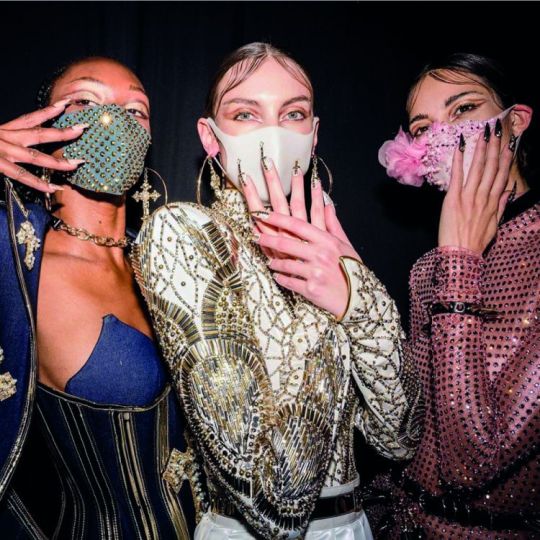
WILL THE PANDEMIC LEAD TO A MORE ETHICAL, SUSTAINABLE INDUSTRY?
"We went way too far. Our reckless actions have burned the house we live in. We conceived of ourselves as separated from nature, we felt cunning and almighty. We usurped nature, we dominated and wounded it."
Alessandro Michele, Creative Director of Gucci
Gucci's creative director Alessandro Michele posted 1,200 words of poetic, impassioned diary excerpts on Instagram, making one thing abundantly clear, Gucci, and possibly the fashion industry as a whole would never be the same again.
The COVID-19 pandemic hit the fashion world hard, gravely impacting all of its global capitals. Even before the virus struck, the industry was ailing. What happens now that no one's compelled to dress up from the waist down? And with our precarious place in the world coming into sharp relief, shopping for season “must-haves” seemed not only frivolous but immoral.
In March, Vogue partnered with the Council of Fashion Designers of America to set up A Common Thread, a pandemic-relief initiative that has raised $4.9 million to date. By May, more than 1,000 companies applied for aid, with even the biggest names on the precipice of an uncertain future.
In the interest of damage control, there has been industry talk of pushing the unreleased 2020 collections to 2021. It's curious that this requires we literally disavow the concept of fashion itself; that amorphous behemoth that tells us whether midi skirts are in or out this season.
With no end in sight to this state of flux, could this be an opportunity for the industry to ask itself some serious existential questions?
THE PROBLEM WITH FASHION
"We didn't respect the planet until now and in a way this [pandemic] is a message and unfortunately it's a very, very heavy message. Change had to be done. Everyone thought that the change would happen gradually, but that's not the case. Change has to be done now, and done quickly."
Sara Maino, Deputy Editor in Chief of Vogue Italia
Before the fashion world spiralled out of control, you had four seasons in the four major fashion capitals - London, Paris, New York and Milan. But the emergence of fast fashion accelerated the situation to a dizzying degree. Brands were sucked into the vortex of insatiable consumer demand. The pressure on luxury and high-street alike to drop new trends at higher speeds and lower costs had designers in a hamster wheel trying to outpace the copycats. "We were out of breath", admits Gucci’s Alessandro Michele, referring to fashion's unrelenting schedule of up to eight collections per year.
In her book, 'Fashionopolis: The Price Of Fast Fashion And The Future Of Clothes', Dana Thomas takes an unflinching look at the catastrophic environmental and human cost of this obsession with newness. Fast fashion refers to the production of masses of cheap, trendy clothes at breakneck speeds. Thomas refers to this as "a dirty, unscrupulous business that exploited humans and Earth alike".
Fashion is one of our biggest global polluters, "responsible for nearly 20 per cent of all industrial pollution annually" and "10 per cent of the carbon emissions in our air". Deep down, we knew our clothes often were made by desperate people in unthinkably dire situations; how could we forget the Rana Plaza disaster in Bangladesh that took the lives of more than a thousand factory workers? Meanwhile, the COVID-19 pandemic has made the human cost of fast fashion devastatingly clear. Crowded, unhygienic environments coupled with exploitative employment and a shady supply chain left brands with no accountability and employees with no pay.
According to Thomas, we buy five times more clothes than the previous generation, with the average garment being worn only seven times before being thrown on the scrap heap. There's no escaping the pangs of guilt that many of us experience with these suspiciously cheap garments. However, there is also no denying that slow fashion can be prohibitively expensive.
Should caring about the environment be a privilege afforded only to the haves, with the blame being placed squarely on the have-nots? And should the onus fall on the consumer to fix the deep-seated problems in the fashion industry or should corporations take responsibility for their exploitative behaviour?
THE SEASON OF DISCONTENT
"At a certain level, most of us were forced to make what the industry told us to make, but it's already proven that the industry is broken. We will now concentrate more on making what we want to make and how we want to make it."
Sonia Carrasco, Fashion Designer and Brand Owner
There are calls for reform, with designer Dries Van Noten urging leading industry figures to sign an open letter setting out some demands. Van Noten wants to reduce the number of runway shows, and the preposterous volume of clothing produced, and sell collections in real-time. That is: bikinis in S/S and coats in A/W. Have you ever been shopping for summer staples, only to find all the season's rejects already relegated to the sales rack? Fashion moves at its own pace darling, a pace at odds with customers' needs. Van Noten says this is about making collections "more environmentally and socially sustainable" with a move towards sustainability throughout the supply chain with less product, less waste and less travel.
Not that Chanel is paying attention, taking customers and press to Capri for its Cruise 2021 pre-collection in June, in the midst of the COVID pandemic. The French fashion house is resolutely old guard, announcing it will stick to six shows: two ready-to-wear, two couture, as well as cruise and Métiers d'Art. Chanel is not alone, with Dior also showcasing its cruise collection physically in Southern Italy.
In response to COVID-19, the British Fashion Council and the Council of Fashion Designers of America released a joint statement, echoing many of Van Noten's concerns. It urges brands, designers and retailers to slow down, with appeals for changes that will benefit customers, improve the wellbeing of the industry and have a positive effect on the environment.
FASHION IN THE TIME OF PANDEMIC
"I try to ask myself what is the meaning of my actions. It's a vital and urgent questioning for me, which demands a careful pause and a delicate listening."
Alessandro Michele, Creative Director of Gucci
The big players in luxury fashion produce between six and eight collections per year, spending an eye-watering amount of money on each show. But is fashion week, with all its excesses and spectacles, gone for good?
The pandemic has led to a cascade of reflection and introspection, and fashion's big players were not unaffected. Saint Laurent announced plans to '"take control of its pace and reshape its schedule". Alessandro Michele has reduced the number of Gucci shows from five to two, nixing both seasons and gender. He writes: "I will abandon the worn-out ritual of seasonalities and shows to regain a new cadence, closer to my expressive call. We will meet just twice a year, to share the chapters of a new story".
After the cancelling of June's men's fashion week in Paris, Louis Vuitton disregarded both the industry's European home-base and its calendar, taking its latest men's show to Shanghai, a big change that signals a significant move towards a consumer-first approach. Which makes perfect sense with shoppers from Asia, the Middle East, Africa and Latin America accounting for the bulk of luxury sales. Is it time to admit that Eurocentric fashion shows are so last season?
Many brands have gone "phygital", which is the somewhat awkward portmanteau describing the hybrid of physical space and digital technologies. With Shanghai and Moscow both fully embracing digital for their fashion weeks in March and April, and Helsinki adopting a purely digital format with innovations such as 3D shows. If more fashion houses go off-piste with localised, digitally amplified events, this could be the death knell for fashion week as we know it.
Another big IRL fashion event on the calendar is the Met Gala, an annual fundraising gala for the Metropolitan Museum of Art's Costume Institute in New York City, and the most-watched fashion/society event of the year. It's usually an occasion for a (very) select few to dress-up in response to the year's theme, in a grand display of fashion as art, with the results ranging from the sublime to the ludicrous. This year it was postponed.
The show must go on, as they say, and it was a group of Gen-Z internet kids known as High Fashion Twitter (or 'hf twitter', because they're too cool for CAPS) hosting the biggest fashion party of the year. On May 4th, instead of the exclusive, highly branded, extremely profitable, marketing opportunity the Met Gala has become, hf twitter brought us an inclusive online celebration of self-expression and diversity. Whether dressing themselves, collaging or using other visual means, the guests shared their 'looks' on Twitter with the hashtag #HFMetGala2020, taking fashion out of the hands of the establishment, if only for a day.
High Fashion Twitter is a loosely structured mix of fashion fans and aficionados, who share inspiration and knowledge while being vocal about industry issues such as representation, sustainability and accountability. And for the event, they purposefully excluded any brands they deemed problematic, such as those known for cultural appropriation.
FASHION AND SOCIETY
"I understand that, for many, the purpose of a fashion magazine is about escapism, about providing beautiful images of beautiful people in beautiful clothes […] But there are moments when this feels weird. And this is one of those moments."
Emanuele Farneti, editor-in-chief of Vogue Italia
The effects of a global disaster of this magnitude amplified many social justice issues, notably resulting in the backlash over tone-deaf comments from fashion brands about the Black Lives Matter Movement, or their conspicuous, deafening silence. There was nowhere for the industry to hide.
While taking any political stance wasn't de rigueur for most major fashion houses, it's now not only accepted but expected to be in touch with issues facing the wider community. In fact, for some, this out-of-touchness is seen as impossibly callous in a world confronted by human tragedy and economic devastation.
There have been attempts to meet the moment, with efforts such as Vogue's new web series "Good Morning Vogue", fashion's self-proclaimed "wake up call". If the last decade has shifted the discourse around issues such as racism and climate change, then the global pandemic has accelerated it.
FASHION GOING FORWARD
"Through the creation of less product, with higher levels of creativity and quality, products will be valued and their shelf life will increase. The focus on creativity and quality of products, reduction in travel and focus on sustainability […] will increase the consumer's respect and ultimately their greater enjoyment in the products that we create."
The British Fashion Council
Driven by a new generation of socially and environmentally conscious consumers who care where the things they buy come from and where they'll end up, brands have upped their sustainability game. And with the threat of this pandemic acting as a call to action for the fashion industry to slow down and scale down before we find our selves facing a much bigger existential threat.
COVID-19 has caused a significant shift in the mindsets of both brand and consumer, teaching us all to slow down and reset. And should this pass, the things we learnt to value, such as our health, our freedom and hopefully our planet, may eclipse our desire for any conveyor belt of trends.
4 notes
·
View notes
Text
Emanuele Farneti releases 100 covers for Vogue Italia and none of them are remarkable
2 notes
·
View notes
Text
“White is not surrender, but a blank sheet waiting to be written, the title page of a new story that is about to begin. “
- Emanuele Farneti
6 notes
·
View notes
Photo
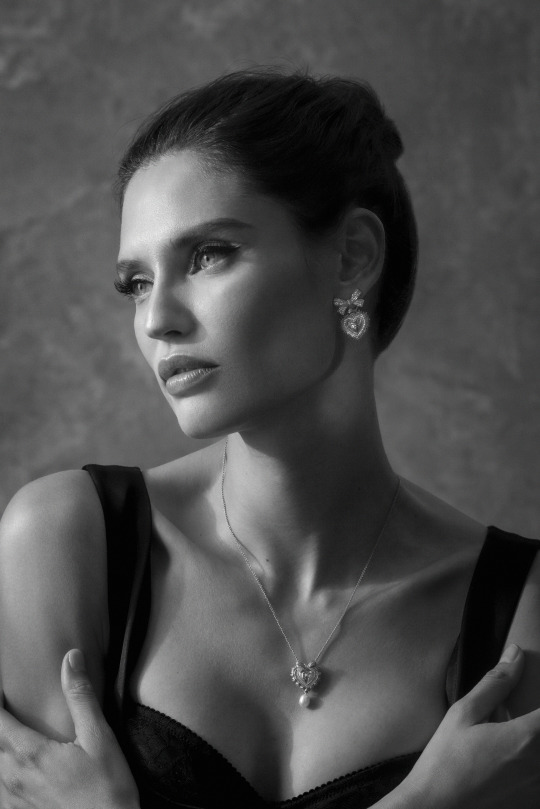
Bianca Balti x Vogue Italia
Editor in chief: Emanuele Farneti
Creative Director: Ferdinando Verderi
Photo: Nicholas Fols
#bravemodels#bebrave#biancabalti#vogueitalia#voguemagazine#editorial#beauty#dolcegabbana#jewellery#bealittlebrave#wewanttobebrave
6 notes
·
View notes